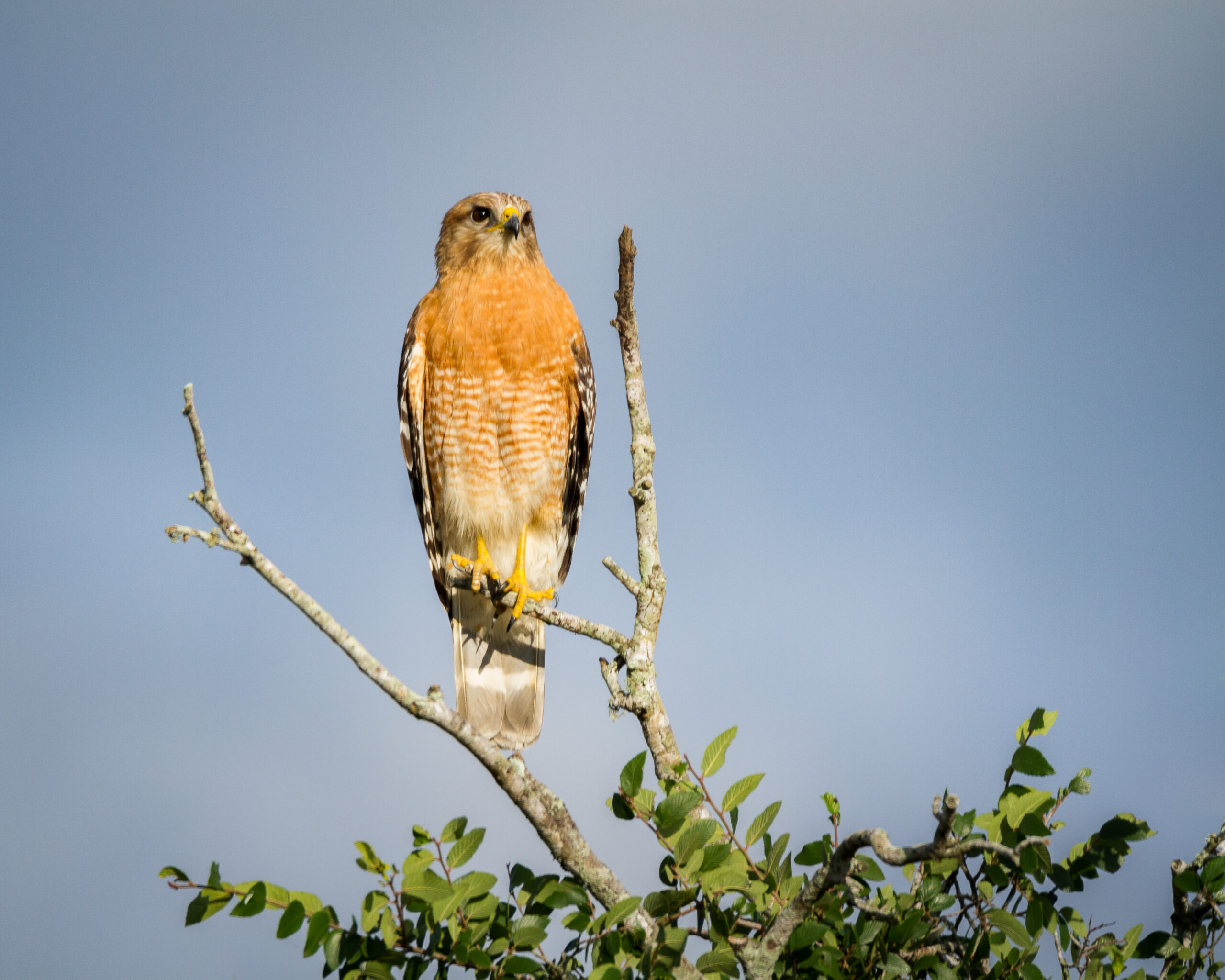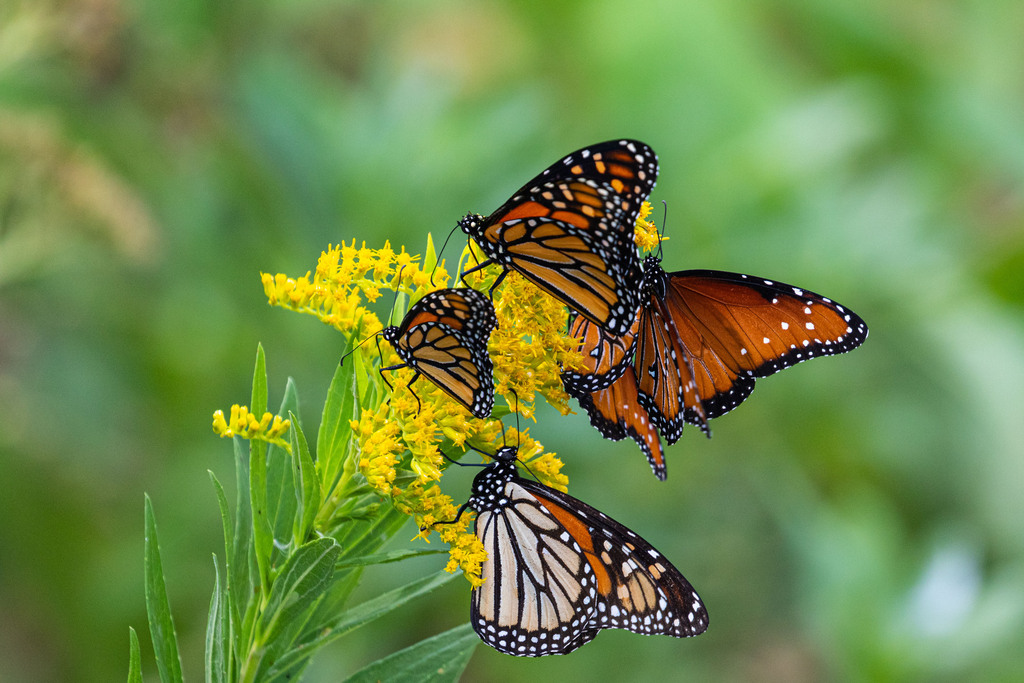In The Sky
Protecting Flying Wildlife in Comal County, TX
Comal County is a sanctuary for a diverse array of flying wildlife, from vibrant songbirds to majestic raptors and delicate butterflies. These species play essential roles in our ecosystems, contributing to pollination, pest control, and the overall health of our environment. Here’s a closer look at some key flying species in Comal County, the threats they face, and our efforts to safeguard them.

Key Flying Species in Comal County
Birds
Barred Owls: These distinctive owls with their “who-cooks-for-you” call are common in Comal County’s wooded areas. They face threats from habitat loss and competition with invasive species. Barred owls are adaptable and can thrive in various woodland habitats, including urban areas with sufficient tree cover.
Black-capped Vireo: This endangered songbird requires specific shrubland habitat for nesting. Habitat loss and fragmentation, along with nest parasitism by brown-headed cowbirds, are significant threats to their population. Conservation efforts include managing vegetation to maintain suitable nesting habitat and controlling cowbird populations.
Blue Heron: Also known as the Great Blue Heron, these majestic wading birds are found near Comal County’s waterways. They are vulnerable to wetland degradation and water pollution. These birds play a crucial role in aquatic ecosystems as both predators and indicators of environmental health.
Golden-cheeked Warbler: This endangered species is unique to central Texas and relies on mature Ashe juniper forests for nesting. Habitat loss due to urbanization and land development poses a significant threat to their survival. Conservation efforts focus on preserving and restoring large tracts of suitable habitat in the Hill Country.
Great Horned Owls: These powerful nocturnal predators are adaptable but face challenges from habitat loss and rodenticide poisoning, which can accumulate in their prey. Their presence in an ecosystem can help control rodent populations, benefiting both urban and rural areas.
Great Egret: These elegant white birds frequent Comal County’s wetlands and waterways. They are sensitive to water pollution and loss of wetland habitats. Their striking appearance during breeding season, with long plumes, makes them a favorite among birdwatchers.
Green Heron: These small, stocky herons are found near Comal County’s water bodies. They are impacted by wetland loss and degradation of riparian areas. Green herons are known for their intelligence, sometimes using bait to lure fish within striking distance.
Painted Bunting: Known for their vibrant plumage, these colorful songbirds face threats from habitat loss, collisions with buildings, and illegal trapping for the pet trade. Their bright colors make them one of the most sought-after birds for birdwatchers in Comal County.
Red-shouldered Hawk: These forest-dwelling raptors are affected by habitat fragmentation and the loss of large, contiguous wooded areas in Comal County. Their distinctive call is often heard echoing through the woods, serving as a natural alarm system for other wildlife.
Rio Grande Turkey: While adaptable, these large birds face challenges from habitat loss and fragmentation, particularly in their roosting areas. They play an important role in seed dispersal and are a valued game species in Texas.
Screech Owl: These small owls are common in Comal County but face threats from pesticide use, which can reduce their prey base, and loss of suitable nesting cavities. Their ability to camouflage against tree bark makes them difficult to spot, even in urban areas.
Insects
Monarch Butterflies: These iconic insects pass through Comal County during their annual migration. They face threats from habitat loss, pesticide use, and climate variability, which affects their food sources and migration patterns. Planting native milkweed and nectar plants in gardens can help support monarch populations during their journey.
Mammals
Mexican Free-tailed Bat: Bracken Cave Preserve hosts the largest known colony of Mexican free-tailed bats in the world, with millions of bats emerging each night during peak seasons. A single Mexican free-tailed bat can consume up to its body weight in insects each night, providing natural pest control for agriculture and reducing the need for chemical pesticides. They face threats from white-nose syndrome, habitat loss, and disturbance of roosting sites
Threats to Flying Wildlife in Comal County
- Habitat Loss: Urban development, agriculture, and land clearing reduce the natural habitats available to flying wildlife, leading to population declines.
- Pollution: Pesticides and other pollutants can poison flying species and reduce the availability of their food sources.
- Human Disturbances: Light pollution, collisions with buildings and vehicles, and disturbances at roosting and nesting sites can negatively affect flying species.
- Peak Migration is from Sept. 5 to Oct. 29. Learn what you can do at Lights Out Texas
- Birdcast – Migration Dashboard for Comal County

Photography Credits – Banner: Jonathan Alonzo, Bat Conservation International, Red-Shouldered Hawk: Jordan Moore, Monarchs: Darlene Vargas
